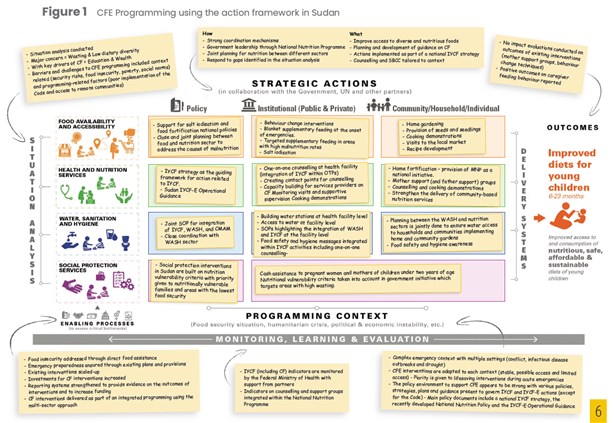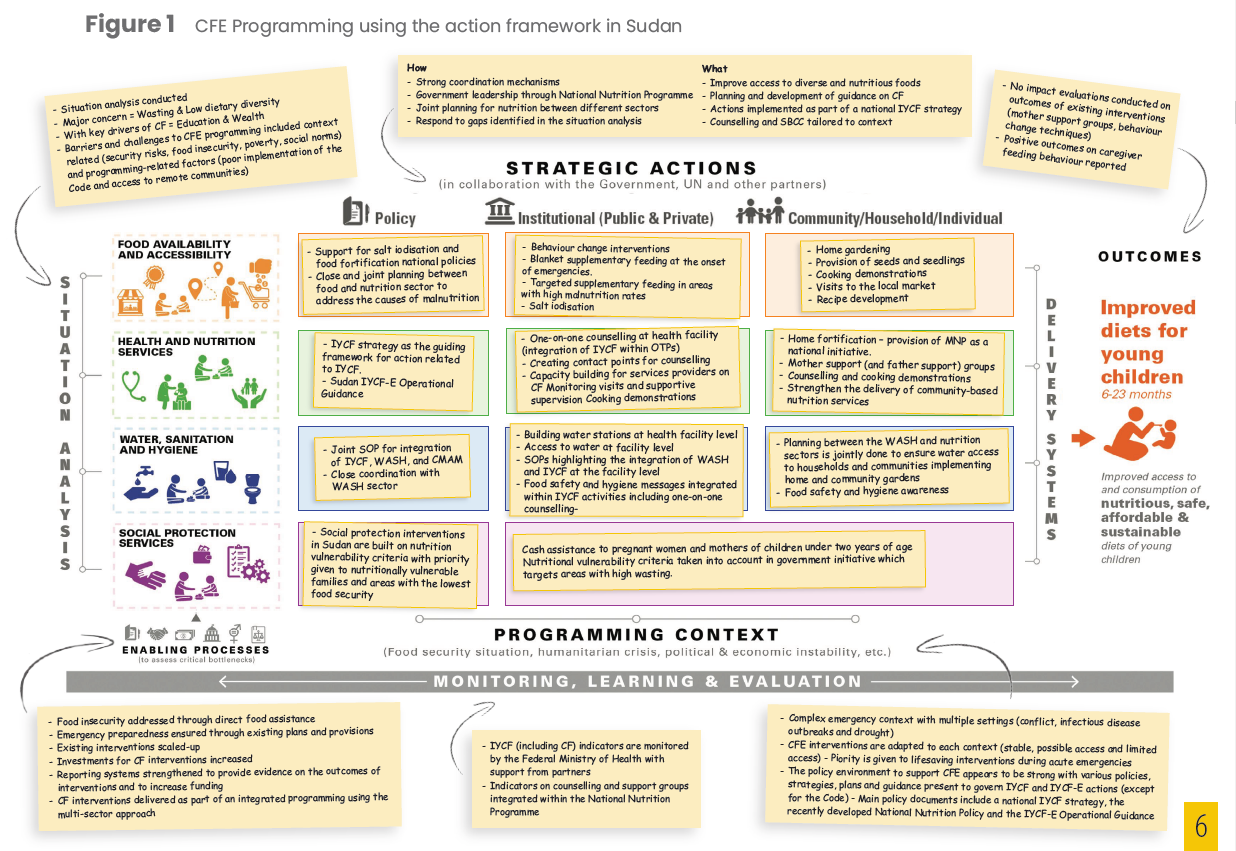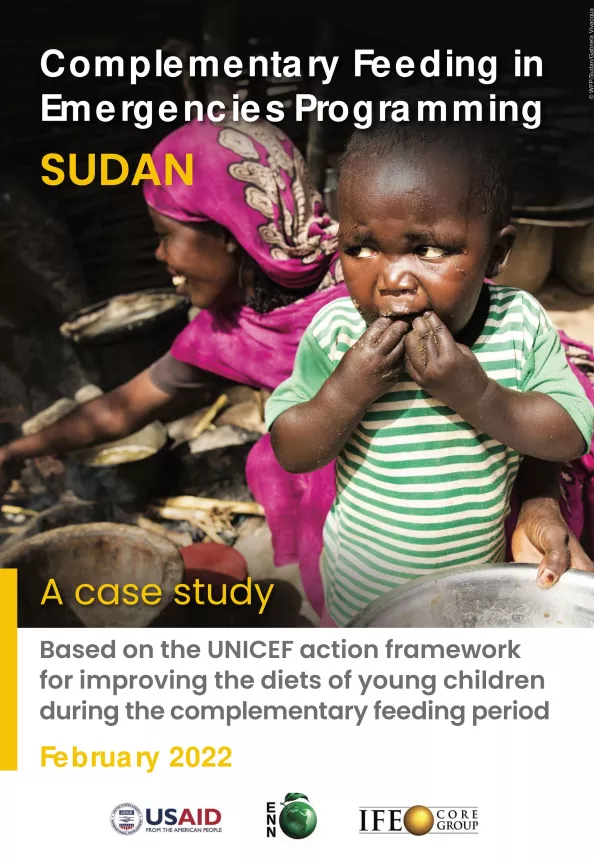Complementary Feeding in Emergencies Programming in Sudan
Publication details
A case study based on the UNICEF Action Framework for improving the diets of young children during the complementary feeding period
Why we did this case study
The complementary feeding (CF) period (6-23 months) is a critical period in a child's life and ensuring an appropriate diet is important to prevent malnutrition. Emergencies are especially critical as infant and young child feeding (IYCF) may be jeopardised. It is therefore vital to prioritise supporting families with children 6-23 months, in emergencies in particular, to ensure access to appropriate complementary foods, promote positive feeding practices and facilitate optimal growth and development.
The Infant and Young Child Feeding in Emergencies (IFE) Core Group provides recommendations for complementary feeding in emergencies (CFE) interventions. In a review of CFE that we conducted in 2019, we identified that there was a gap in the 'how-to' of supporting the diets of young children in emergencies. In early 2020, UNICEF launched a document 'Programming Guidance for Improving Young Children's Diets During the Complementary Feeding Period', which provides an Action Framework to improve the diets of children 6-23 months of age. We therefore decided to examine the interventions and actions implemented in emergencies using the Action Framework as a tool.
What we did
We undertook a series of case-studies in two countries - Sudan and Nigeria - where some progress towards improving complementary feeding (CF) programming in emergencies had been reported and key CF actions and interventions to improve young children's diets had been documented. We hoped that the learnings from these two countries would provide greater insights for both country-level practitioners and global-level decision-makers on the 'how to' of CFE programming and contribute to improving CFE programming.
How we did it
We used a case study methodology to collect information from multiple sources including a country-level document review, an online survey questionnaire and key informant interviews. We classified data by themes following the logic of the Action Framework within the UNICEF Programme Guidance for Improving the Diets of Young Children During the Complementary Feeding Period. We then reported on the various components of CFE programming that emerged from this analysis.
What we found
Using the template of the Action Framework, we have summarised the findings of this case study in Figure 1 - the template appears in the background and our findings in yellow notes.


What did this case study contribute?
As we used the UNICEF CF Programming Guidance and its Action Framework to document CFE interventions in Sudan, we were able to learn that:
1) Having a package of interventions that is contextualised enables a more effective response to context-specific needs.
2) Undertaking detailed situation analyses and examining the drivers of CF practices provided the necessary knowledge to guide the design and action of interventions.
3) Joint planning and a shared vision amongst different actors and systems strengthens the outcomes of CFE programming.
4) Localised initiatives that provide a comprehensive package of CF interventions and that build the evidence on impact may contribute to building the momentum for scale-up and adoption at the national level to maximise impact.
We believe that the Action Framework was a useful tool as it helped to lay out the different components and stages of CFE programming and to identify potential opportunities at different levels and through various channels. It may therefore be useful for other countries to consider using it to plan, prepare for and implement CFE programming and interventions. Nevertheless, it is still necessary to examine different settings including contexts where CF is not prioritised and therefore not yet established.

 English
English Français
Français Deutsch
Deutsch Italiano
Italiano Español
Español